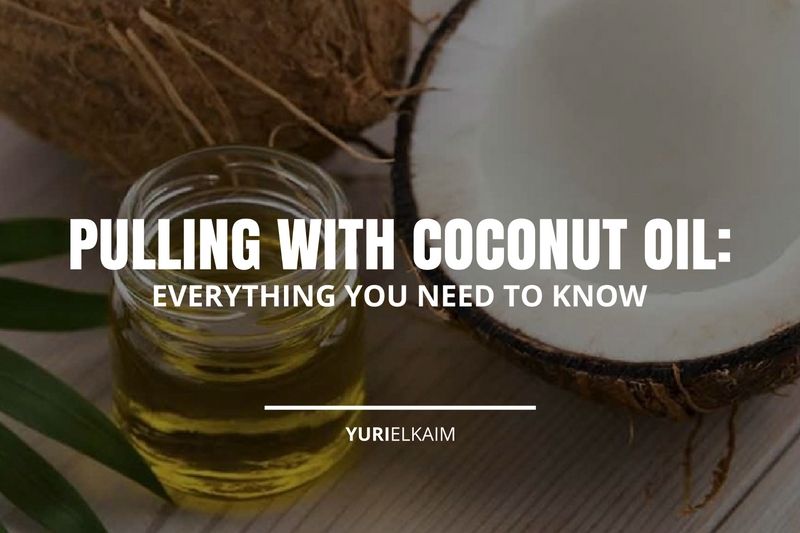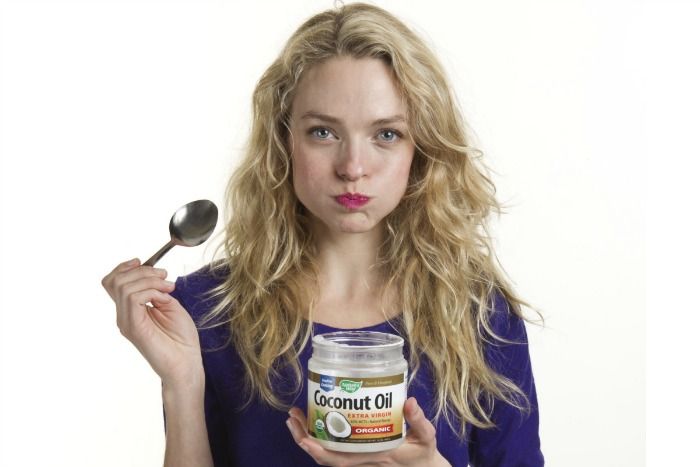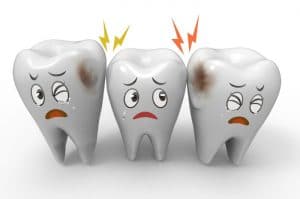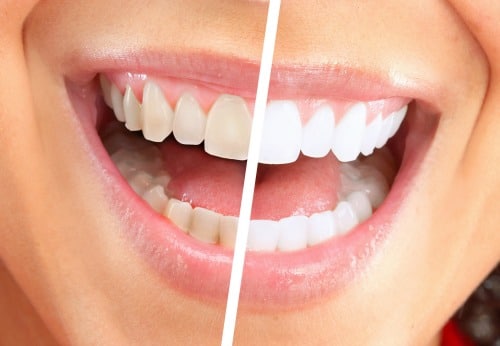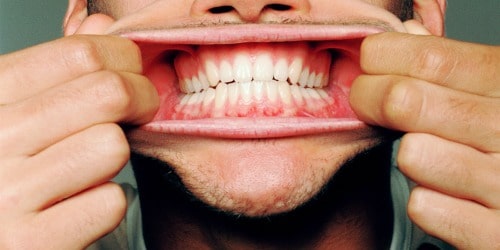In this article
Unless you’ve been living under a rock, there’s a pretty good chance you’ve heard about the wonders of coconut oil: it’s good for your heart, your brain, your skin, and your health in general.
But did you know that one of benefits of coconut oil is that it’s an awesome tool for promoting oral hygiene, whitening teeth, and preventing cavities?
In a world where gum disease is common and most of us have had a couple of cavities by the time we graduate high school, dental hygiene is no joke.
Still, with more than a quarter of adults with untreated tooth decay, there has to be a solution to improve oral health safely, conveniently, and effectively.
Enter “oil pulling.”
This is one of the best natural remedies that is, unfortunately, highly underrated. It’s a super easy process that should definitely be a staple in your health regimen.
Let’s explore exactly what pulling with coconut oil means, what the benefits are to your health, and what some of the side effects can be.
What is Oil Pulling?
Oil pulling is a traditional ayurvedic practice that involves swishing a tablespoon of oil in your mouth for 10 to 15 minutes each day.
For maximum effectiveness, the oil should be moved around the entire mouth: front and back, side to side, and through the teeth.
Although oil pulling has been around for ages, it has really gained traction and increased in popularity in recent years.
Sesame oil is traditionally used for oil pulling, but other oils can be used as well.
Coconut oil, olive oil, and sunflower oil are some of the other most common contenders when it comes to oil pulling.
How does it work?
The oil pulls toxins and bacteria from the mouth, removing harmful substances and helping to clean and heal the mouth.
Oil is used because it’s lipophilic, meaning that it attracts other oils, helping to remove harmful substances more easily. This translates to less plaque, fewer cavities, and a happier mouth.
Traditional ayurveda literature claims that the detoxifying action from oil pulling can cure a wide assortment of diseases and benefit overall health.
Specifically, proponents of oil pulling say it can ease joint pain and stiffness, relieve nasal congestion, alleviate migraines, improve skin, bump up energy levels, and regulate menstrual cycles.
Evidence is limited when it comes to the total-body effects of oil pulling, but its oral health benefits are definitely supported by science.
Let’s look at a few of the pulling coconut oil benefits.
Benefits of Pulling with Coconut Oil
It Protects Against Cavities
Dental caries, or cavities, are tiny holes that form from permanent damage to teeth caused by tooth decay. Harmful bacteria transform sugar from the foods that we eat into acid, which is used to create a cavity in the tooth.
Oil pulling can actually help prevent cavities by wiping out the bacteria that causes them. In fact, studies have shown that pulling with coconut oil is actually as effective as antiseptic mouthwashes at killing off bacteria (1).
Other research has found that oil pulling doesn’t just prevent bacteria from forming in plaque, but it keeps it out of saliva too (2).
Approximately 94 percent of adults have had a cavity in their permanent teeth at some point, so it’s clear that oil pulling can be of benefit to the vast majority of us to help keep those cavities away.
It Whitens Your Teeth
Yes, those detoxifying effects of coconut oil can even give you a brighter smile.
This is one of the best natural remedies for teeth whitening because it’s so much easier, more convenient, and more affordable than sitting with a slippery strip on your teeth for an hour only to be left with sore gums.
Practice oil pulling every day and you’ll start to see the whitening benefits as the coconut oil slowly strips away the bacteria, revealing the sparkling smile underneath.
It Promotes Gum Health
According to the Centers for Disease Control, nearly half of American adults have some form of periodontal (gum) disease, while more than 70 percent of adults over 65 suffer from the condition (3).
A strong link has been established between gum health and oil pulling. Its intense detoxifying power can prevent and treat gingivitis and gum disease while promoting overall oral health.
One study focused specifically on adolescents with plaque-induced gingivitis. After just seven days, there was a significant decrease in plaque and their gingivitis had improved (4).
Another trial found similar results, noting a considerable drop in bacteria, plaque, and gingivitis following the ten-day study (5).
It Treats Bad Breath
If you’ve ever had to deal with halitosis (bad breath), you know it’s not fun.
The treatment usually involves germicidal oral rinses that keep bacteria at bay to prevent odor. This can have some undesirable consequences, like dry mouth, taste changes, and increased tartar.
Oil pulling is an effective and inexpensive alternative treatment that can help keep your breath smelling fresh without the negative effects. Here are 9 more natural solutions.
Studies have actually found that oil pulling can be as successful in treating halitosis as chlorhexidine (6).
Best of all: no need for a prescription or the nasty medication side effects.
Coconut Oil Pulling Side Effects
That being said, as with anything, there can be negative side effects that accompany all the benefits of oil pulling.
Here are a few:
Nausea
Some report feeling nauseous during oil pulling.
Though the mechanism is unclear, make sure you listen to your body and do what feels right if you do experience nausea or an upset stomach.
Sore jaw muscles
As you can imagine, swishing oil around in your mouth for up to 20 minutes can, unsurprisingly, lead to a sore jaw. If this happens, it probably means that you’re working a little too hard.
Take it easy and go a little slower the next time.
Headache
While oil pulling is supposed to help alleviate headaches, there are some reports of headaches getting worse after oil pulling.
It seems that this reaction is only typical when oil pulling is first started.
Lipoid Pneumonia
If you’re not careful and accidentally inhale some of the coconut oil while you’re swishing, it can lead to a dangerous condition called lipoid pneumonia.
This is a form of lung inflammation that is caused when fat enters the lungs and it can cause excessive coughing, fever, and shortness of breath.
Why Pull with Coconut Oil?
Many different types of oils are used to oil pull, but to get the biggest bang for your buck, I highly recommend using coconut oil.
Sesame oil, sunflower oil, and safflower oil are often used, but are actually pro-inflammatory due to their high omega-6 fatty acid content.
Coconut oil, on the other hand, is rich in lauric acid, which is known to help fight inflammation.
Coconut oil is also unparalleled in its antimicrobial, antiviral and anti-fungal properties, meaning it’s the optimal choice for cutting out bacteria and promoting oral health.
Getting Started: 9 Tips for Coconut Oil Pulling
1. Start your Morning with Oil Pulling
Try to do it before you’ve eaten anything to maximize results.
2. Let the Oil Melt in Your Mouth
If this makes you feel queasy, you can melt it beforehand.
Coconut oil turns into a solid at room temperature, but after a few moments in your mouth, it should soften enough to get the job done.
3. Swish the Oil Gently
To be able to go for 10 to 15 minutes at a time, it’s key to avoid overdoing it.
If you start feeling an ache after just a few minutes of swishing, slow down.
4. Keep the Oil Away from your Throat
Don’t gargle with it to avoid accidentally swallowing or inhaling any of the oil and prevent any potential side effects
5. Build Up Slowly
Start with pulling for five minutes, then build your way up to 20 over time. It gets easier over time as you become accustomed to it.
6. Experiment to Find the Right Amount
Most recommend using between one to three teaspoons of coconut oil, but you might need more or less depending on how you feel (or how big your mouth is!).
It’s important to make sure you’re not swallowing any oil while pulling, so if you find it difficult, it might mean you should be swishing with less.
7. Multi-Task
Put those 15 minutes devoted to oil pulling to good use by tackling other small tasks. It helps make the process easier, more enjoyable, and more productive.
Set a timer and use the spare time to get a jumpstart on your morning routine.
8. Rinse your Mouth Out
When you’re done oil pulling and have spit out the oil into the trash, always rinse with water or salt water before drinking or eating anything else.
9. Keep a Trash Bag Handy
Avoid spitting the oil into the sink or down the toilet because it can build up over time and lead to clogging.
Keep Brushing and Flossing
Pulling with coconut oil can be a great supplement to your dental routine, but it should absolutely be used in conjunction with regular brushing, flossing, and good oral hygiene.
To take advantage even further of the incredible benefits of coconut oil on oral health, check out my super easy recipe for homemade coconut oil toothpaste.
Stay Healthy at Home
Looking for more natural remedies that let you take charge of your health without using prescription or over-the-counter drugs?
Get Yuri’s top 10 tried-and-true home remedies for skin, eye, and ear problems, colds and flu, and more!
Download the FREE Natural Home Remedies Handbook now by clicking the banner below.

